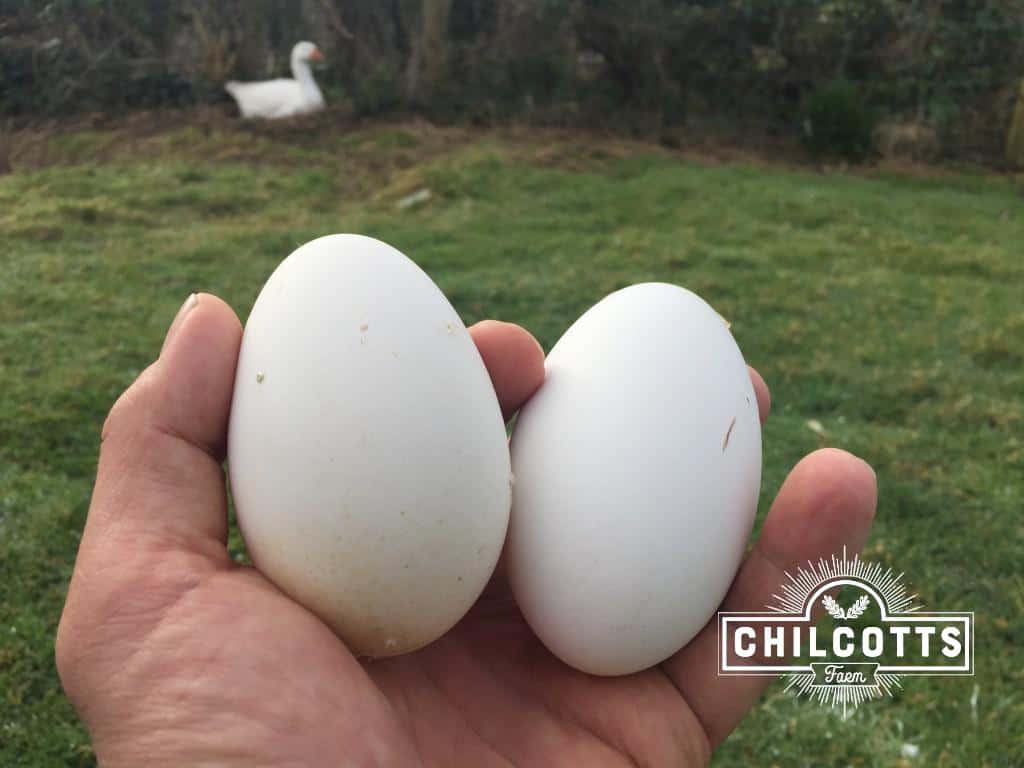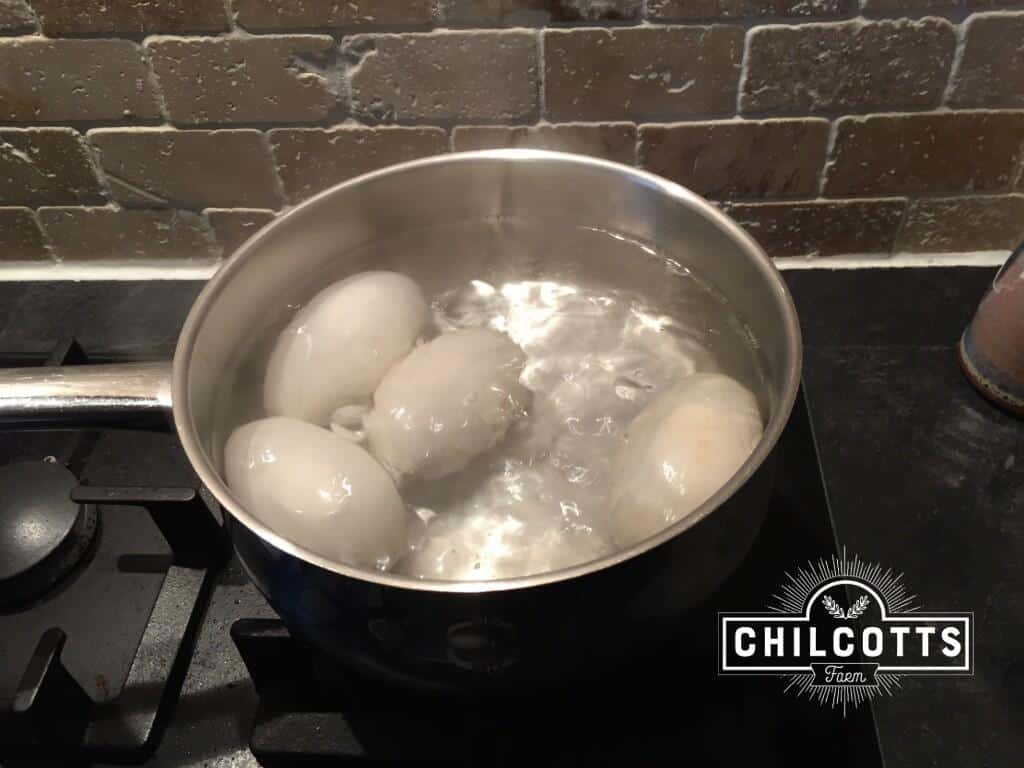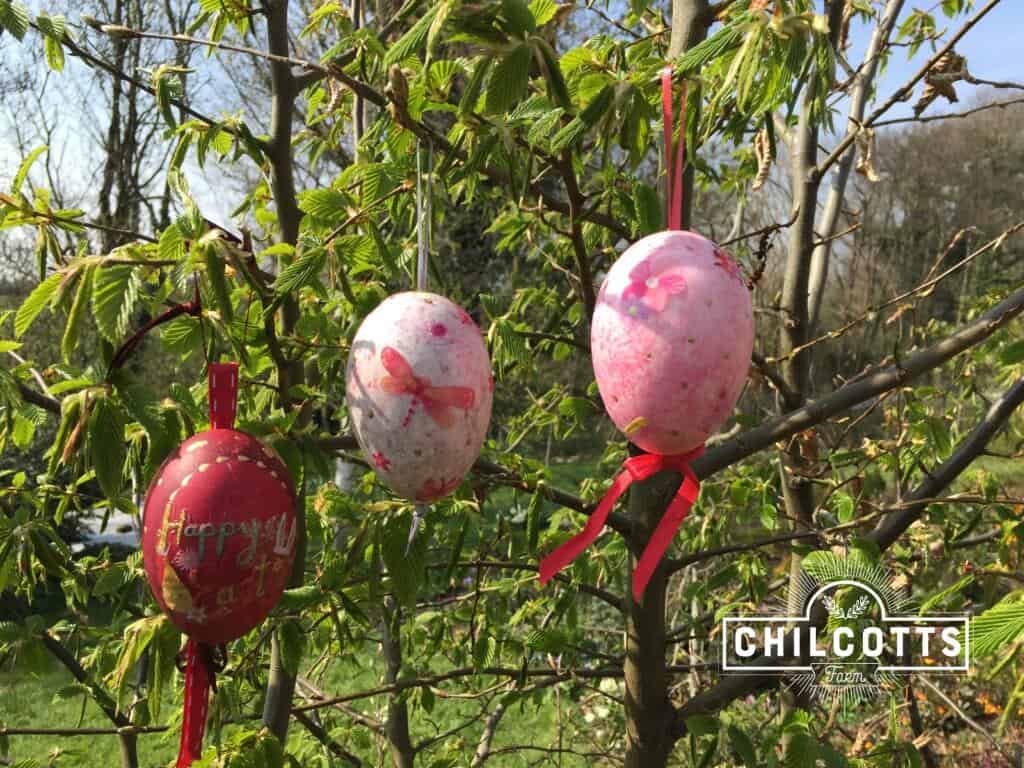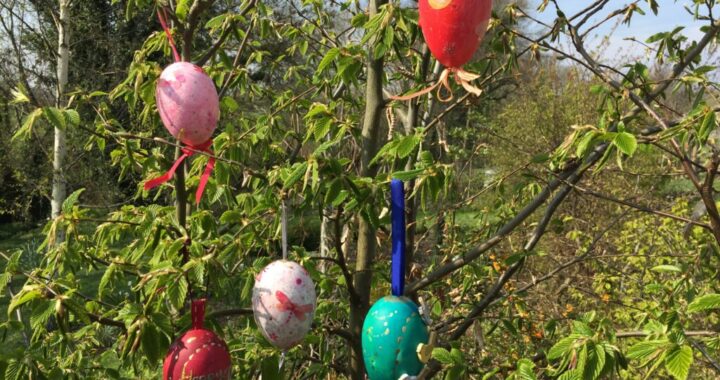Evgger wanted to decorate an egg for Easter?
We use goose eggs, as they are large, however chicken and duck eggs can also be used following the method below:
Preserving The Egg
Eggs can be hard boiled and then decorated, however, these should then be eaten.
Goose egg shell is quite robust, so can be used to make a decorated egg that will last and keep indefinitely. To make a decorated egg, the white and yolk need to be removed, and the inside given a little wash. This can be done by 'blowing' the egg.
Blowing an Egg
Blowing an egg is quite straight forward, the method being applicable to most eggs. Here's what to do:
- Holding the egg over a bowl, pierce a hole in both ends with a clean wood nail.
- This will make a pin prick hole in either end of the egg.
- Make sure that you push the nail deeply into the egg to make a hole in the egg membrane.
- At this stage,still over the bowl, pierce your lips over one hole in the egg, while keeping the other end unblocked.
- Give a gentle blow.
- The egg should start to come out the other end.
- If you are having difficulty, cover both the holes, give the egg a vigorous shake to try and break up the yolk and white inside.
- Try blowing again.
- Once the white and yolk has been completely removed from the egg, don't throw it away! The egg yolk and white, can be used for cooking.
- Now hold one hole of the egg under a cold tap and let water fill the egg.
- Give the egg a shake, then let the water drain out.
- Leave the egg to dry.



Basic dyeing
- Once dried the egg can be decorated.
- Decoration can be left to your imagination using a variety of techniques, from pens, to stickers, to paints. We use an edible egg dye, but food colouring can be used too.
- The advantage of the egg dye is that it is edible and can be also used on hard boiled eggs.
- Follow the instructions on the egg dye packet, but typically this involves dissolving the dye in water and then dipping the egg. An egg could be dipped multiple times, to get a rainbow or blend of colours.
- In our picture, we have dyed the egg all one colour, there are a couple of eggs, that have been dipped in a marbling dye, which gives a marbled affect.
Further Decoration
If you are colouring your egg first, as described above, wait until the dye is dried, then embellish your design with transfers, and felt tip pen.
As a final layer of protection an clear lacquer or varnish can be applied.
To finish it off, why not thread a bit of ribbon through the egg, so that it can be hung up?


